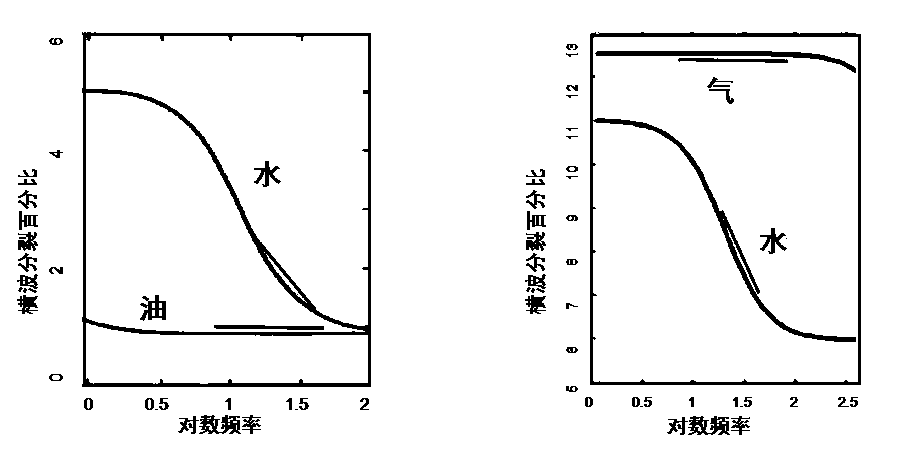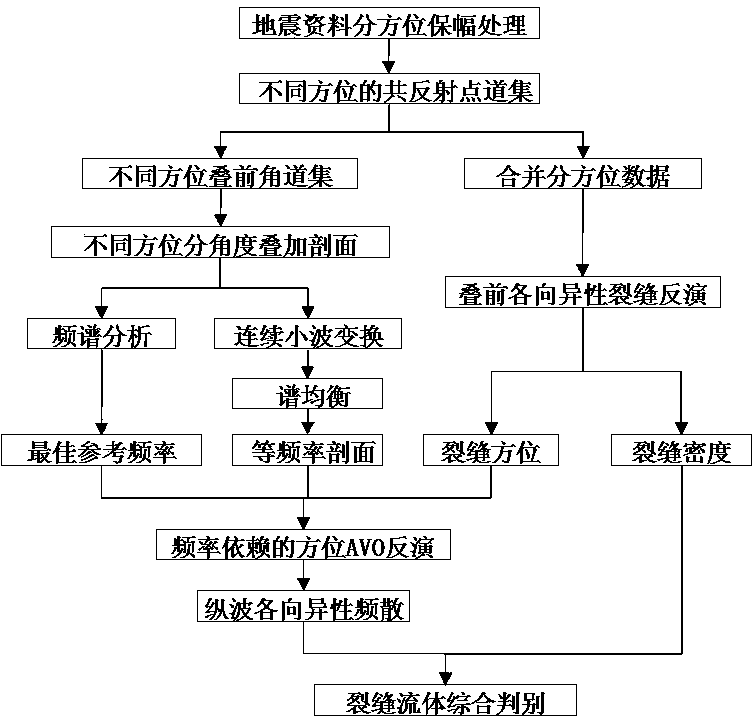Crack fluid type identifying method based on longitudinal wave frequency depending on amplitude versus offset (AVO) and azimuth
A fluid identification and orientation technology, applied in the field of petroleum exploration, can solve the problems of expensive shear wave data collection, no actual data, and human factors are greatly affected
- Summary
- Abstract
- Description
- Claims
- Application Information
AI Technical Summary
Problems solved by technology
Method used
Image
Examples
Embodiment 1
[0085] figure 1 It is a schematic diagram of the frequency-dependent shear wave splitting for the same fracture model filled with different fluids. The left figure is the frequency-dependent shear-wave splitting when the oil is full and water (modified from Qian et al., 2007); the right is the frequency-dependent shear-wave splitting when the gas is full and water (Chapman and Liu, 2004). It can be seen that under the same fracture background, when the fracture contains gas, the degree of anisotropy is the largest, followed by water, and finally oil; under the same fracture background, when the fracture contains water, the shear wave splitting percentage is relatively The change in frequency is the largest, however, when the fracture is saturated with oil or gas, the change of shear wave splitting percentage with respect to seismic frequency is not obvious, which inspires us to explore the relationship between the change rate of longitudinal wave anisotropy with respect to sei...
PUM
 Login to View More
Login to View More Abstract
Description
Claims
Application Information
 Login to View More
Login to View More - R&D
- Intellectual Property
- Life Sciences
- Materials
- Tech Scout
- Unparalleled Data Quality
- Higher Quality Content
- 60% Fewer Hallucinations
Browse by: Latest US Patents, China's latest patents, Technical Efficacy Thesaurus, Application Domain, Technology Topic, Popular Technical Reports.
© 2025 PatSnap. All rights reserved.Legal|Privacy policy|Modern Slavery Act Transparency Statement|Sitemap|About US| Contact US: help@patsnap.com



